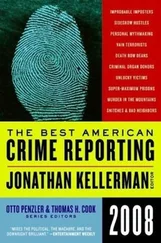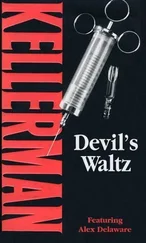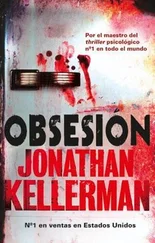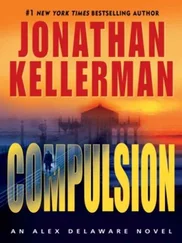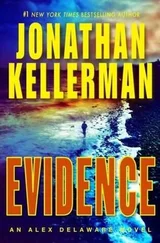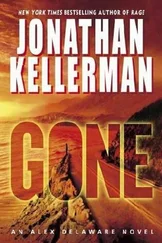When he arrived at the law firm with a search warrant, two dollies, a departmental locksmith, and Detectives Lorrie Mendez, Moses Reed, and Sean Binchy, he was confronted by an administrative partner, “one of those pompous twits” named Robert Malley.
Malley made a show of blocking Loach’s door, first insisting entry was impossible, then taking a long time to read the warrant, only to sputter about egregious violation of client confidentiality.
Milo said, “His only client is my other suspect.”
Malley said, “What if you don’t know everything? How will you differentiate between relevant and not relevant?”
“I’m doing it right now, you’re irrelevant. Now move. ”
Nothing to differentiate; the only files in Loach’s bench-made, English-import, mahogany Regency Revival cabinet pertained to Enid and Averell DePauw.
It took a while to comb through the eight boxes retrieved from the office, with Milo taking on the job in an empty conference room at the station, and I his volunteer assistant. Most of the documents were what you’d expect with big money being moved around: limited liability real estate syndications, prospectuses, investment reports, tax forms, invitations to participate in corporate proxy votes.
A few told the story.
Three months prior to foreclosure on the house on Bel Azura Drive, a petition to declare Zina Rutherford mentally incompetent, backed up by a psychiatrist named Roberta Waters, was approved by a Superior Court judge named Arthur Ernest.
The push to make commitments more difficult was well under way by then, but you could still pull it off if the patient was sufficiently impaired. Or you had the right connections.
A search of doctor roberta waters pulled up the fact that she’d lost her license several years later due to substance abuse issues.
A search of judge arthur ernest pulled up the fact that eight months after he’d disenfranchised Zina, he’d retired from the bench to take a position of counsel to Loach’s law firm.
Waters had been dead for twenty-three years, Ernest for seventeen. Zina’s court-appointed counsel at the time, a Legal Aid newbie named Donald Pkach, was in practice now in Tacoma, Washington. Milo reached his office and asked him.
He said, “You expect me to remember that?” and hung up.
As a result of Ernest’s decision, Zina had been committed to a private facility in Denver, long shuttered. Nothing further on her until her brother reported her missing and Dub Ott tried to find her.
At the time of commitment, legal and physical custody of “minor child Jane Z. Rutherford” had passed to petitioners Enid and Averell DePauw.
Milo said, “Handed over to the evil aunt, what a nightmare.”
I said, “Five years old. Going back to St. Denis wasn’t psychotic, she’d lived there.”
He passed me another sheet. “Not for long.”
Within six months of being separated from her mother, minor child Jane Z. Rutherford’s welfare had been entrusted to the county foster care system, with petitioners DePauw requesting termination of custody due to “incorrigible behavioral issues.”
This time, an associate at the law firm had handled the couple’s business affairs. J. Y. Loach, Esq.
Nothing in the file on any subsequent adoption by the non-ideal Chases. If they were still out there, good luck finding them.
I said, “Enid eliminates Zina, makes a show of parenting her daughter, then, after a token period, she cuts her off, too.”
“And takes her inheritance,” said Milo. “What a fucking monster.”
The two of us spent a long time putting together numbers. Enid DePauw’s cash, securities, and real estate holdings, including several absentee partnerships spread across five states, neared one hundred million dollars, forty percent of that the property on St. Denis.
Milo said, “Even a small part of that woulda made Zelda a rich woman.”
My stomach lurched. I got up and left the office, walked up and down the hall, returned feeling clammy.
Milo said, “You okay?”
“There’s an eleven-year-old boy who’d be rich if he’s alive.”
“Hey, the jury’s not out yet — that little Swede said she didn’t take the kid with her to Skid Row.”
“That little Norwegian is psychotic. Any plans to dig up the poison patch?”
“Matter of fact, in a few hours,” he said. “Your botanist buddy will be there. Why do you ask?”
“Before you go, see if you can pull up prints from any of these docs related to Zelda.”
“Why?”
I told him.
He said, “Interesting. You usually are.”
No need for the big dig to go unnoticed by the neighbors. The stream of crypt and police vehicles brought them out, gawking and exchanging misinformation.
Milo said, “More foot traffic than this place has ever seen.”
I said, “Let’s have a block party.”
The onlookers were a mixed bunch of residents in expensive leisure clothes, uniformed domestics, and a motley group of dogs. A couple of canines got into altercations with each other, with cross words exchanged by their humans.
I said, “Peace in the canyon.”
As Milo and I prepared to walk through the gates, a hollow-cheeked woman wearing black velvet sweats and several pounds of gold and gems marched up to us. “I need to know what’s going on, Officers.”
Milo said, “We’re doing police work,” and walked away.
The woman said, “Well, he’s got an attitude. What’s his name?”
I said, “Masterson Earp,” and caught up just in time to slip through the closing gates.
The digging crew was Liz Wilkinson and six graduate students. Ben Haroyushi, in a pith helmet and khakis, was off to the side, photographing plants, snipping, bagging, tagging.
When he finished, he walked up to me. “Thanks for the opportunity, Alex. This’ll make for a great lecture.”
“Lethal horticulture?”
“A lot of horticulture is lethal but I never get to talk about it,” said Ben. “Seeing it all in one place, there’s an... aura.” He grinned. “Don’t quote me on that, too new-agey. But it’s hard to ignore, no?”
No use bringing in cadaver dogs. The scents from two graves in a limited area would satiate them in seconds.
Ground-penetrating radar brought up nothing. Neither did a visual inspection of the surface dirt.
Liz said, “If anything’s down there, it’s going to be deep. But we’ll start with surface exploration and take it slowly.”
Milo and I and a couple of uniforms stood around and worked our cellphones as the grad students began staking and gridding, then picked up their hand tools. Earning their stipends with sweat equity. But process doesn’t matter, outcome does, and after a while the futility of the exercise was obvious.
The initial three feet of earth contained no remains other than the skeletons of small animals — moles, gophers, a desiccated twig-like thing Liz I.D.’d as a shrew.
No bones at all in the next tier. Milo said, “That’s six feet under. Going deeper?”
“Let’s do another eighteen inches,” said Liz. “Just to make sure.”
As daylight began to dim and the students replenished with sports drinks, candy bars, and texting, she proclaimed the area “clean.”
I didn’t know what to feel about that.
Enid DePauw and J. Yarmuth Loach remained incommunicado in their jail cells, their lawyers reacting to denial of bail with pro forma outrage and making noises about suing for unlawful arrest. Neither attorney had been given anything but the basics on the arrest warrant. If they had been clued in, they might have sung another tune.
DOJ had confirmed a mother — daughter link between the skeleton buried beneath Imelda Soriano and Zelda Chase. The lab also firmly established the identities of Imelda Soriano and Alicia Santos, each fatally shot with bullets that matched the rifling marks of the .22 found in Enid DePauw’s S&W. Only one set of fingerprints on the weapon: hers.
Читать дальше

